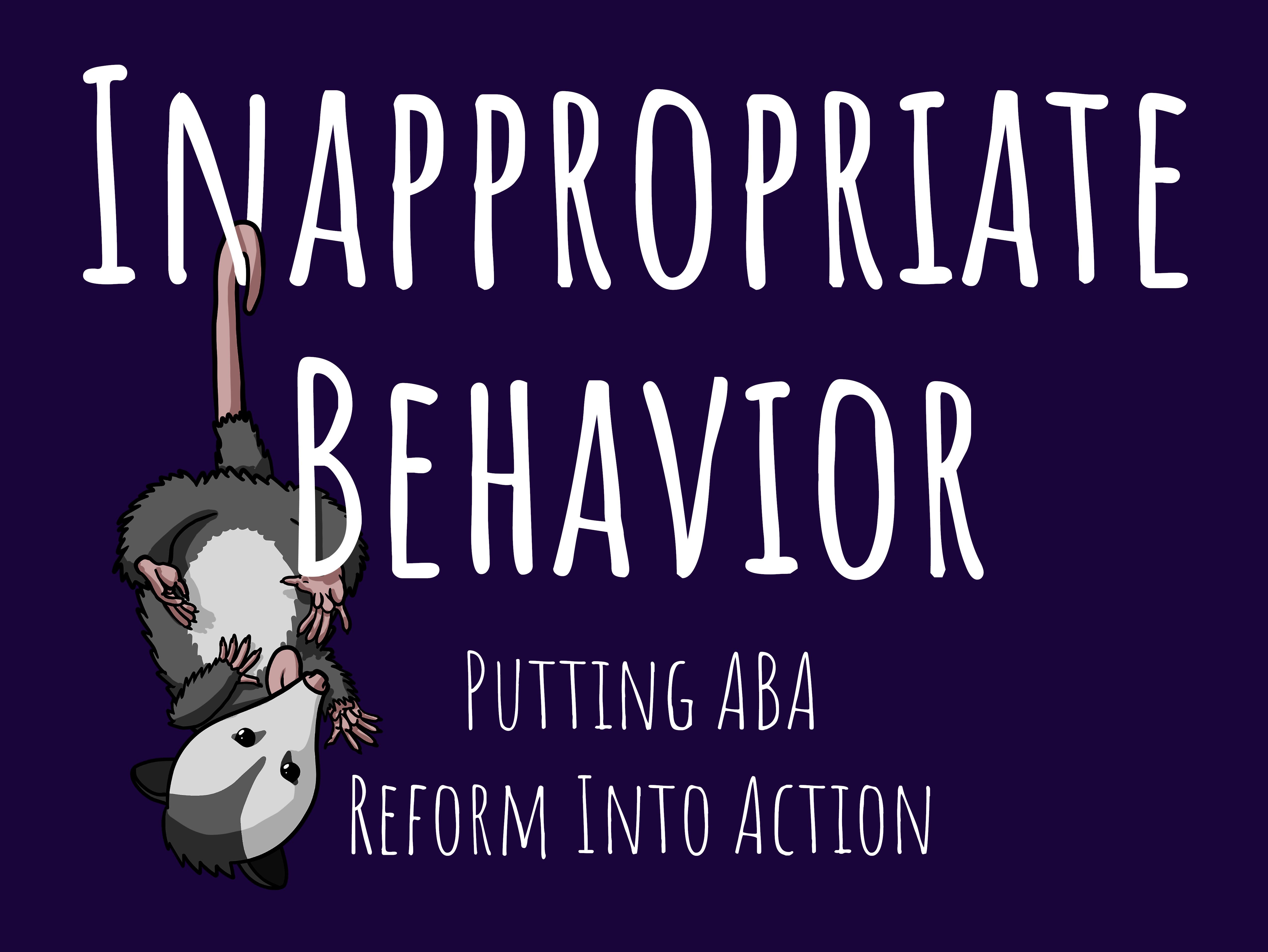Spoiler alert: It’s still troubling and true.
CW: Aversives, torture, child abuse on the basis of gender, sexual, and romantic orientation, suicide/suicidal ideation
It seems about a month before I made this post, ABA International put out this statement on conversion therapy.
Well what kind of marsupial writer would I be if I didn’t address that?
In my original post, I discuss that O. Ivar Lovaas is continuously celebrated as the “father” of modern ABA. There’s no discussion whatsoever about his contributions to conversion therapy’s creation — and there are many. While he may not have been the father of conversation therapy– that honor goes to George Rekers– he was definitely an active parent in its inception. I also point out that to date, the field had yet to provide a satisfactory response to Lovaas’ “Sissy Boy” study and his role in conversion therapy.
I stand by that conclusion
There is a lot to applaud about ABA International’s statement. It defines conversion therapy well, and includes the other ways to which it’s referred so as to avoid any potential loopholes through rebranding. The descriptions of conversion therapy include techniques easily recognizable as part of ABA (though not directly labeled as such), and candidly and honestly states the harm these practices have caused. It also provides a short list of helpful terms that someone could use to start identifying the holes in their own expertises, though the list is far from exhaustive.
I especially appreciated the description for the way these practices can be casually applied and reinforced by problematic societal expectations, such as aggressively-gendered toys. The authors point out these behaviors as unacceptable practices, despite being fully aware (I assume) that some people will consider these statements to be “political,” and complain that their “beliefs” are being discriminated against. Furthermore, ABAI goes on to strongly suggest that BCBAs ensure their practices are affirming to gender, sexual, and romantic minorities, and to expand their knowledge on these topics.
Significant by his absence
All that being said, there is one name missing from this entire statement: Lovaas.
Yes, it matters. Without acknowledging his hand in creating conversion therapy, including that he used the same procedures to try to make autistic children appear neurotypical, the entire statement starts to come off as rather reactionary.
As I discussed in my original post on this topic, one of the harshest way ABA has been criticized has been to refer to it as “autistic conversion therapy,” or even just “gay conversion therapy” rebranded for autism. It elicits a hugely emotional reaction from many practitioners, including myself the first time I heard it.
But see, here’s the issue: No one ever acknowledges that there is even a connection. Not once in any ABA class or panel discussion is it ever stated that Lovaas had any hand whatsoever in conversion therapy. We just scream about how dare those autistics say that and move on.
Are we doing better or just defending our honor?
What this statement needs to include is that yes, Lovaas was heavily involved in conversion therapy, and that yes, we as a field wholeheartedly condemn those ideas and practices. We need to be lamenting that part of our history, not ignoring it and certainly not pretending it doesn’t exist.
With the gaping hole left by Lovaas’ absence in this statement, it makes me question its sincerity and purpose. Are we really trying to push our field to do better, or are we simply trying to dispel the mean things said about us? Is this statement informative or defensive? I can’t tell, especially given the recent appointment of the Task Force on person-centered practice.
There has yet to be a direct statement acknowledging ABA’s problematic past, only how we are doing better now. So, how is that different from #NotAllABA?

